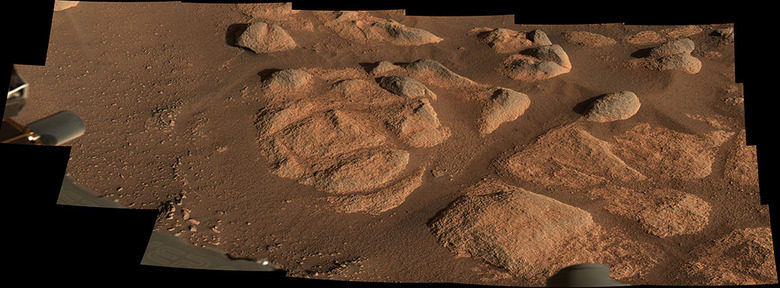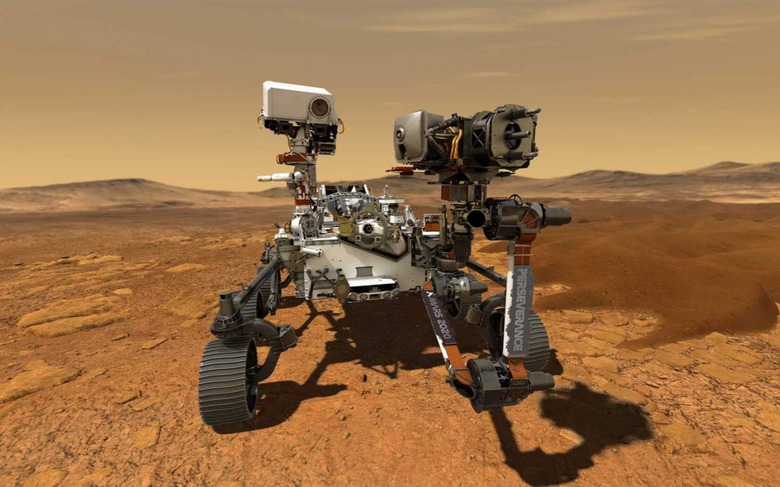Perseverance rover surveys Mars as NASA prepares for a tough decision
NASA's Perseverance rover is taking a closer look at Mars, though it's still yet to get actively grabby with its robotic arm. The six-wheeled science lab aims to help identify signs of past life on the red planet – though that's expected to be microbial rather than anything larger – but to do that it needs to extend its instruments and figure out how to make best use of its precious sampling capacity.
Those instruments were safely packaged up in the SUV-sized rover, as it made its long trip to Mars and then its tense descent to the planet's surface. NASA picked the landing spot based on what's believed to be the ancient history of Mars: though currently red-tinged rock, it was once a vast lake.
It's not like Perseverance has been idle since landing in Jezero Crater, either. The rover has been acting as camera-operator for the Ingenuity helicopter's flight attempts, as well as its data relay back to NASA on Earth, while also examining some of the rocks around it as the Jet Propulsion Laboratory (JPL) team responsible for the mission figure out what to prioritize next.

The robotic arm that Perseverance is equipped with has a number of different tools and sensors onboard, and which have been working in tandem with others mounted elsewhere on the rover. The Mastcam-Z imager on the "head," for example, has been capturing photos of the Martian terrain when it wasn't zoomed in on Ingenuity's flights. At the same time, its WATSON camera – fixed to the arm itself – has been getting close-ups of the rocks around Perseverance.
Though it hasn't actually grabbed any direct samples yet, that doesn't mean the rover hasn't left more of a mark than from its tire patterns alone. Its SuperCam laser instrument, for example, uses a laser and spectrometers in order to analyze the mineral and molecular makeup of different rocks. It can do that from afar, too: up to 20 feet away, NASA says.

By identifying potential areas of specific interest, the JPL can maximize the scientific impact of Perseverance's hands-on efforts. Rather than a grabber, there, the rover has an abrader on the end of its arm, which it can use to grind away and flatten the surface of rocks. In the process, it can prepare a flat area for better sampling, as well as remove accumulated sand and dust that might've been deposited there by the Martian winds.
Ingenuity will be part of that search, too. Having aced its initial tests, the Mars helicopter will accompany Perseverance to its next locations, including giving a bird's-eye view of areas which the rover might struggle to reach on the ground.
The end goal is to identify what will be involved in what's arguably the most audacious aspect of Perseverance's mission. NASA and the JPL aim to use the rover's drill to take rock and regolith samples, which will be captured in specially-designed, super-clean tubes. They'll be left on the surface of the planet, ready to be retrieved by future missions – which may not take place until sometime in the 2030s – and then, eventually, returned to Earth so that further analysis can be undertaken.
Perseverance, however, only has a limited number of those sampling tubes. Just 43 were selected to travel to Mars with the rover, from 93 candidates, and of that only 38 will actually be used for collecting rock and soil. The remainder are so-called "witness tubes" and will be opened, one at a time, near sample collection sites. That way, they'll be able to capture any Earth contaminants or impurities that might have traveled with Perseverance, so that they can be discounted when the tubes return home.
